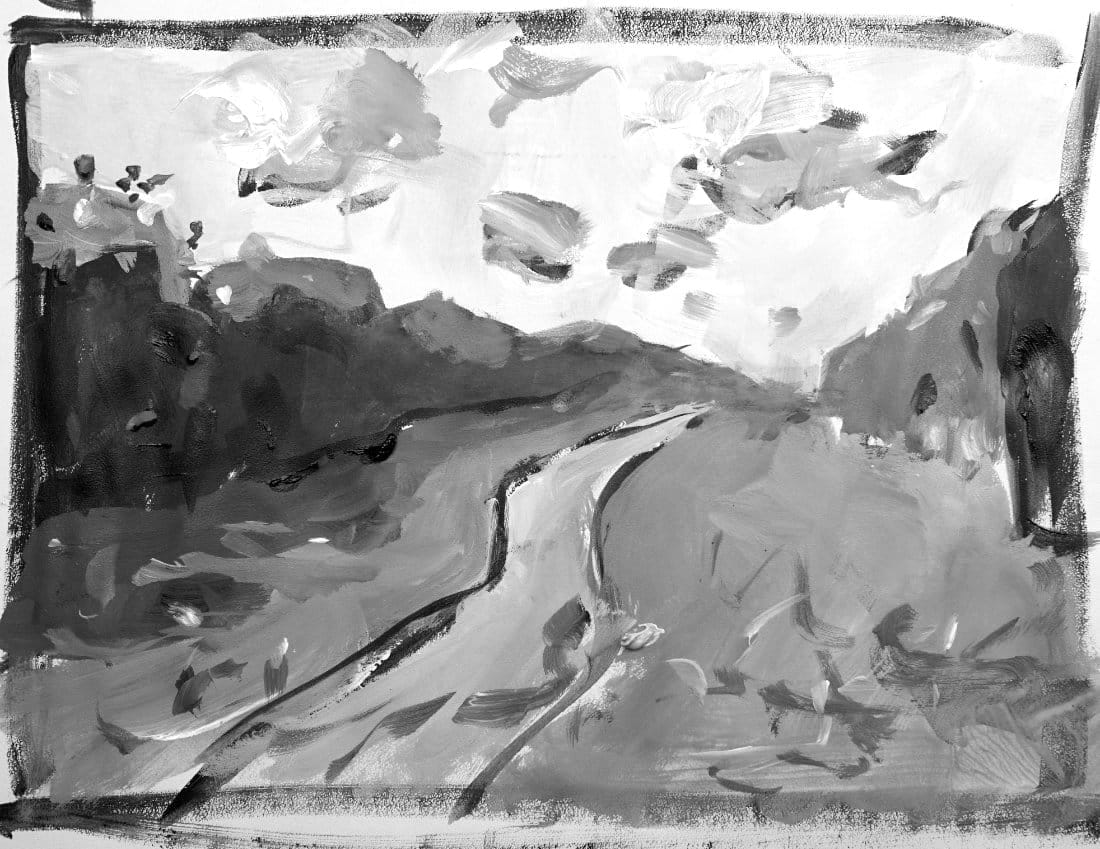Acrylic Landscape Painting – Atmospheric Perspective 101
Discover how to use atmospheric perspective to paint depth in acrylic landscapes. Learn how value, color, and edges change with distance.

Atmospheric perspective is the illusion of depth created by how air and light affect what we see at a distance. As objects move farther away, their values get lighter, their edges soften, and their colors lose intensity. These changes happen because there’s more atmosphere—more air, moisture, and light scattering—between you and the subject.
This lesson is part of the Acrylic Landscape Painting Fundamentals Course.
What You'll Learn about Atmospheric Perspective
In this lesson, we’ll explore how to use those effects to build depth and realism in your acrylic landscapes.
You’ll learn how to:
- Compress values so the background feels lighter and softer
- Shift color temperature and saturation to create believable distance
- Use edge control to make space feel natural and unified
- Keep your atmosphere convincing without losing structure
Once you start to paint with atmosphere in mind, you’ll notice your landscapes feel bigger, calmer, and more convincing—even when using a limited palette.

Course Navigation
Previous Lesson: Three Planes & Light Shadow Demo
Next Lesson: Two Color Theories for Atmospheric Perspective
Return to Hub: Acrylic Landscape Painting Fundamentals
Learn & Improve Your Acrylic Skills
- Acrylic Hub– Your go-to guide for tutorials, tips, and resources.
- Ultimate Beginner Acrylic Course - Start painting with confidence.
- Subscribe for More Great Content - Get tutorials, tips, and updates straight to your inbox.
- Follow Me on Pinterest - Daily inspiration, tips, and fresh ideas.
Recommended Acrylic Painting Materials
-
Princeton Catalyst Brushes – Flats (#6, #12), Rounds (#4, #8), Fan (#4), Liner Brush
Durable synthetic bristles for versatile acrylic techniques -
Liquitex Heavy Body Acrylic Paint – Essential Colors
Cadmium Yellow, Yellow Ochre, Alizarin Crimson, Cadmium Red Light, Ultramarine Blue, Cobalt Blue, Burnt Sienna, Titanium White -
Winsor & Newton Cotton Canvas
Reliable stretched canvas for studio and plein air work -
Strathmore 400 Series Mixed Media Paper
Heavyweight, acid-free paper for acrylic and mixed media -
Fabriano Artistico 140lb Cold Press Paper
Excellent for acrylic, mixed media, and textured effects -
Blick Multi-Colored Painting Knife Set
Variety of shapes for texture, scraping, and bold strokes - Miscellaneous: Two pint-sized water containers, paper towels (from Home Depot or Walmart)
- Note: I use canvas or sturdy cardboard as my palette — no store-bought palettes needed.




